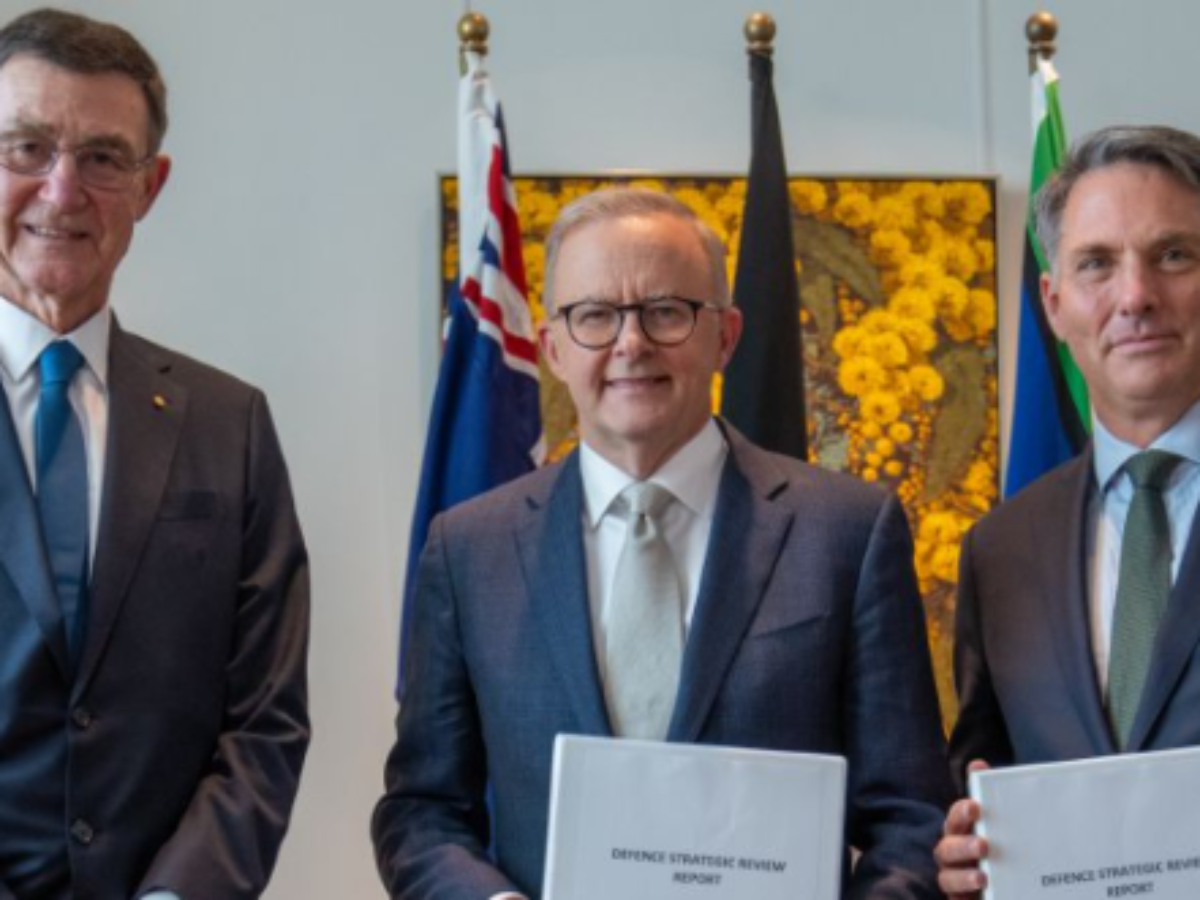Government receives Defence Strategic Review

The federal government has received the report of the Defence Strategic Review which will guide the development of the Australian Defence Force and hence the areas of focus of government procurement for many years to come.
The report was formally handed over to Prime Minister Anthony Albanese and Defence Minister Richard Marles by former chief of the Defence Force, Sir Angus Houston (pictured) who conducted the review along with former minister for defence, Professor Stephen Smith.
Albanese said, “The Defence Strategic Review will help prepare Australia to effectively respond to the changing regional and global strategic environment and ensure Defence’s capability and structure is fit for purpose and delivers the greatest return on investment.”
The study canvassed expert opinion widely, receiving hundreds of formal submissions and has reported on Australia’s defence force posture, force structure, and capabilities.
Albanese said: “We’re making sure Australia is prepared for the challenging strategic circumstances we face.”
The DSR comes at a time of increasing tensions in our region and at a time when the defence budget is increasingly seen as unaffordable.
This is even before the decision of the Morrison government, endorsed by Albanese, to purchase nuclear powered submarines at massive cost as part of the AUKUS pact.
The pact will weigh heavily on the report as it has opened up a new era of deep cooperation between Australia, the United Kingdom and the United States…not just on submarine technology but in a wide range of areas such as hypersonics, undersea warfare, AI, space, autonomous systems and more.
The collaboration is already in action, with Australian submariners training on UK nuclear submarines – a vital need if we are to acquire nuclear technologies.
Australia has also accelerated developments in underwater autonomous systems, such as the $140 million partnership between RAN, Defence Science and Technology Group (DSTG) and Anduril Australia to manufacture three Ghost Shark XL-AUVs – large unmanned underwater vessels.
Similarly, lessons from Russia’s invasion of Ukraine will be taken into account, including the small scale of weapons stocks held, the key role of drones in surveillance and attack, the future of conventional systems such as tanks and the importance of linking data gathering to operational response.
The government has already taken steps to wind back one existing programme, the purchase of 450 infantry fighting vehicles at a cost of up to $27 billion has been cut back to a requirement for 300 vehicles.
The government is now considering the report prior to its planned release.
Industry will be watching closely, especially what it says about national self-sufficiency in the production of – and the ability to rapidly scale up output of – key manufactures needed by the ADF.
The need is for a rapid development of local capability and production capacity, and the development of local technologies and local skills that would be needed should conflict eventuate.
Next month @AuManufacturing will publish a two week editorial series Celebrating Australian sovereign capability, which will explore the issues around critical Australian industries, and what is needed to achieve a greater level of Australian ownership and control of intellectual property.
Further reading:
ANDURIL AUTONOMOUS SUB DOCKS IN SYDNEY
AUKUS INNOVATION: ABOUT FAR MORE THAN SUBMARINES – BY MICHAEL SHARPE
LAND FORCES 2022 – AUKUS – A CATALYST FOR WIDER COLLABORATION, BY MICHAEL MCLEAN
Picture: Angus Huston with Anthony Albanese and Richard Marles
Topics Analysis and Commentary Defence
@aumanufacturing Sections
Analysis and Commentary Awards Defence Manufacturing News Podcast Technology Videos






